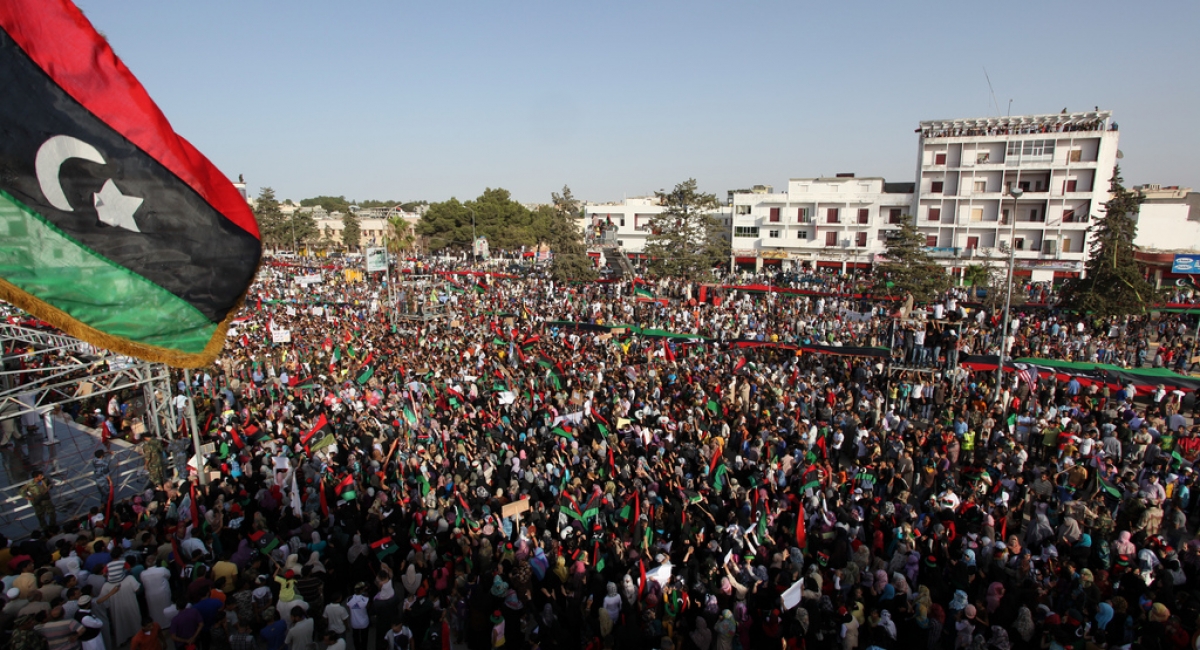Notes from Libya fieldwork

Picture: one of the demonstrations in 2011 that toppled the Gaddafi regime. Source: Wikipedia
During the summer of 2017, work package 6 of the EUNPACK project carried out quantitative surveys among 228 respondents in Tunisia, Libya, and Italy about their perceptions of the European Union’s responses to the crisis unfolding in Libya. The surveys were organised and implemented by the Institut de Recherche sur le Maghreb Contemporain in Tunis as the local partner together with the Sant’ Anna School of Advanced Studies in Pisa.
A policy brief (Deliverable 6.9) based on the survey highlights that while the EU is the best-known international actor involved in crisis response in Libya, the impact of its initiatives is less visible, prompting a certain degree of dissatisfaction, if not outright scepticism. This is particularly notable among ethnic minorities living in peripheral regions. On the other hand, the EU was in particular praised for its initiatives in the fields of humanitarian assistance and capacity building, especially in targeting the most vulnerable social groups.
The profiles of the surveyed population mirror rather accurately some of the defining features of the Libyan population overall. The vast majority of the respondents are Libyan nationals (90.4%) and define themselves as Sunni Muslims (90%). (Those who are not Libyan nationals include sub-Saharan African migrants present in Libya [3% of the sample] and foreign workers involved in different ways in crisis response initiatives dealing with Libya, the majority of whom are Tunisians [1.7%] and Italians [1.7%].)
In line with the country’s high social standards (by comparison with the rest of the region), 82.4% of respondents described their social status as average or above average. In terms of self-identified ethnic belonging, the surveyed individuals include 70% Arabs, 12.3% Tuaregs, 7% Amazigh/Berber, 2% Tawergha, and 0.4% Tebu. Slightly less than two thirds (62.7%) of the respondents live in Tripolitania, and considerably fewer in the other historic regions of Libya, including 11.4% in Cyrenaica and 11% in Fezzan. Moreover, 8% of the respondents live outside Libya, including 5.7% in Tunisia.
The full policy brief is available here.

